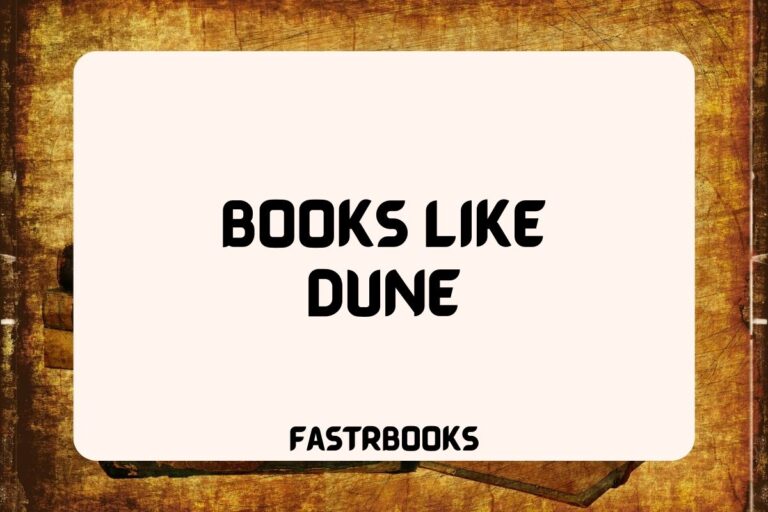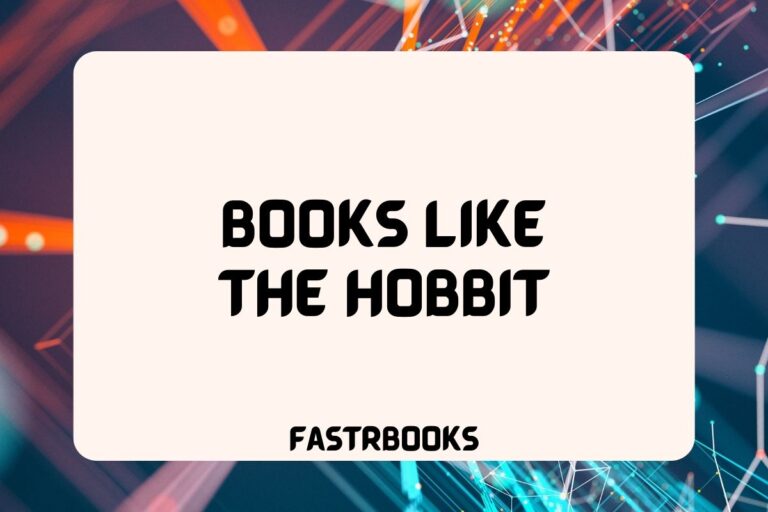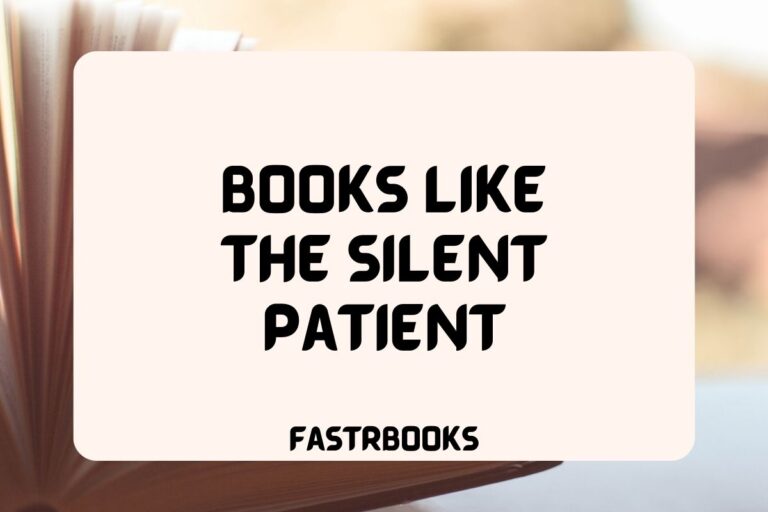13 Books like The Secret History

In “The Secret History” by Donna Tartt, readers are drawn into the mysterious world of an elite group of college students entangled in a dark web of secrets and deception. This captivating novel explores themes of privilege, morality, and the consequences of obsession.
If you’re craving more tales that delve into the complexities of human nature and the mystery of clandestine societies, here are a few books that will keep you engaged from start to finish.
Books like The Secret History
1. If We Were Villains by M.L. Rio
This novel delves into the intense and dark world of a group of Shakespearean actors at an elite arts college, where the lines between performance and reality blur dangerously. The story unfolds as the characters navigate their complex relationships, secrets, and the aftermath of a deadly incident. With its rich, lyrical prose and compelling narrative, “If We Were Villains” explores themes of art, identity, and the price of ambition.
Major Similarities: Like “The Secret History,” “If We Were Villains” centers around a tight-knit group of college students with elite interests, this time in Shakespeare rather than Classics. Both novels feature a murder that tests the bonds of friendship and loyalty within the group, unraveling in a narrative filled with intrigue and intellectual depth.
2. The Goldfinch by Donna Tartt
Another masterpiece by Donna Tartt, “The Goldfinch” combines vivid storytelling with intricate character development to explore the life of Theo Decker, who survives an accident that kills his mother. The novel follows Theo through his grief, guilt, and the underworld of art, as he clings to a small painting that reminds him of his mother. Tartt’s narrative weaves themes of beauty, loss, and the transformative power of art throughout the sprawling tale.
Major Similarities: “The Goldfinch” shares Tartt’s signature style of deep psychological insight and complex character dynamics found in “The Secret History.” Both novels explore themes of obsession, loss, and the moral ambiguities of their protagonists’ choices, engaging readers in a richly textured narrative.
3. Special Topics in Calamity Physics by Marisha Pessl
This novel is a compelling mix of mystery, coming-of-age story, and a deep dive into the complexities of familial and academic relationships. Through the eyes of Blue van Meer, a highly intelligent but socially awkward student, readers are introduced to a charismatic teacher and a group of eccentric peers, leading to a year of profound change and a mysterious death.
Major Similarities: “Special Topics in Calamity Physics,” like “The Secret History,” features a protagonist drawn into a close-knit academic circle that ultimately reveals dark secrets and moral ambiguities. Both books are structured around academic themes and contain a blend of intellectualism and suspense.
4. The Likeness by Tana French
In “The Likeness,” detective Cassie Maddox goes undercover to infiltrate a close group of friends living together in an old house, after a woman bearing a striking resemblance to her is found dead. The investigation becomes deeply personal as Cassie grows attached to the suspects, uncovering secrets and lies that challenge her identity and morals.
Major Similarities: The novel shares “The Secret History’s” theme of identity and the complexities of tightly-knit groups, set against a backdrop of mystery and psychological depth. Both stories involve young adults in academic settings, weaving together elements of crime, suspense, and the exploration of friendship.
5. The Lake of Dead Languages by Carol Goodman
Set in a girls’ boarding school in the Adirondacks, this novel follows Jane Hudson, who returns to her alma mater as a Latin teacher, only to be confronted by memories of her own student days, marked by tragedy, suicide, and rumored curses. The past and present collide as Jane uncovers the truth about events that once seemed like accidents.
Major Similarities: Like “The Secret History,” Goodman’s novel is set in an academic environment that becomes the stage for a series of tragic events, exploring themes of memory, guilt, and the power of language. Both novels craft a suspenseful narrative that blurs the lines between past and present.
6. Brideshead Revisited by Evelyn Waugh
This classic novel chronicles the complex relationships between Charles Ryder, a middle-class student at Oxford University, and the aristocratic Flyte family, whom he meets during his time at university. The narrative explores themes of nostalgia, love, faith, and the decline of the English aristocracy through the lens of Ryder’s evocative memories.
Major Similarities: “Brideshead Revisited” and “The Secret History” both examine themes of friendship, social class, and the impact of the past on the present, set against the backdrop of prestigious academic institutions. While “Brideshead” focuses more on the interwar period and religious themes, both novels are rich in character study and the exploration of moral complexities.
7. The Basic Eight by Daniel Handler
This darkly comedic novel follows the story of Flannery Culp, a high school senior, and her group of friends as they navigate the ups and downs of adolescence. The narrative, structured as Flannery’s journal, slowly reveals the truth behind a shocking crime the group is involved in, blending satire with a critical examination of media sensationalism and the pressures of high school life.
Major Similarities: “The Basic Eight” resembles “The Secret History” in its exploration of a close-knit group of students involved in a crime, narrated with a sense of retrospective introspection. Both novels delve into the dynamics of friendship and the darker aspects of intellectual elitism.
8. We Were Liars by E. Lockhart
Set on a private island off the coast of Massachusetts, this novel tells the story of Cadence Sinclair Eastman and her summers spent with the Sinclair family, particularly focusing on the “Liars,” a group of four friends, including Cadence. Following a mysterious accident, Cadence struggles to remember the events of Summer Fifteen and uncovers family secrets and the harsh realities beneath the Sinclair family’s perfect facade.
Major Similarities: Both “We Were Liars” and “The Secret History” explore themes of privilege, the complexities of friendship and family, and the impact of tragic events. The use of an unreliable narrator in both stories adds to the mystery and suspense, inviting readers to piece together the truth.
9. Black Chalk by Christopher J. Yates
In this psychological thriller, six students at Oxford University start a game of dares that spirals out of control, leading to psychological breakdowns, betrayal, and ultimately, tragedy. The narrative switches between the past, during their time at university, and fourteen years later, revealing the long-lasting effects of the game on the survivors.
Major Similarities: “Black Chalk” shares with “The Secret History” an academic setting, a close group of friends engaging in increasingly dangerous activities, and a narrative that unfolds the psychological impact of their choices. Both novels offer a deep dive into the consequences of intellectual gamesmanship and moral ambiguity.
10. A Secret History of Witches by Louisa Morgan
Spanning five generations, this novel follows the Orchière witches as they strive to preserve their magical heritage while facing societal changes and threats. From the remote cliffs of 19th-century Brittany to war-torn London, the story explores the bonds of family, the power of love, and the struggle to maintain one’s identity in a world that seeks to suppress it.
Major Similarities: While “A Secret History of Witches” differs in genre, focusing on historical fantasy, it shares with “The Secret History” themes of secrecy, the exploration of a hidden world within our own, and the complex dynamics of a group bound by a unique heritage. Both novels delve into the impact of tradition and knowledge passed down through generations.
11. The Bellwether Revivals by Benjamin Wood
Set against the backdrop of Cambridge University, this novel follows Oscar Lowe, a young nursing home assistant who becomes entangled with the Bellwether family, particularly the charismatic and troubled musical genius Eden Bellwether, who believes he can heal through music. As Oscar is drawn deeper into Eden’s world, he must unravel the truth behind Eden’s gifts and the dangerous line between genius and madness.
Major Similarities: “The Bellwether Revivals” and “The Secret History” both focus on charismatic leaders within elite academic circles, exploring themes of obsession, the power of art (music in “Bellwether,” classical studies in “Secret History”), and the consequences of unchecked ambition. The novels also share a narrative tension between the outsider perspective and the insular world of the protagonists.
12. The Shadow of the Wind by Carlos Ruiz Zafón
In post-Civil War Barcelona, young Daniel Sempere is taken to the secret Cemetery of Forgotten Books, where he selects a novel called “The Shadow of the Wind” by Julián Carax. As Daniel seeks to discover more about the mysterious author, he becomes involved in a story of love, revenge, and secrets that spans several generations, with the city of Barcelona serving as a richly drawn backdrop.
Major Similarities: While not set in an academic environment, “The Shadow of the Wind” shares with “The Secret History” a deep appreciation for the power of literature and storytelling. Both novels feature young protagonists uncovering complex mysteries that challenge their understanding of identity and history, wrapped in beautifully atmospheric prose.
13. The Magus by John Fowles
Set on a Greek island, this novel follows Nicholas Urfe, a young Englishman who becomes involved with the wealthy and mysterious Maurice Conchis. As Nicholas is drawn into Conchis’s psychological games and historical reenactments, he encounters a world of deception, seduction, and illusion, challenging his perceptions of reality and self.
Major Similarities: “The Magus” and “The Secret History” both explore themes of intellectual exploration, moral ambiguity, and the consequences of becoming entangled in the manipulative schemes of charismatic individuals. Both novels are set in richly detailed locations that enhance the sense of mystery and psychological depth.






